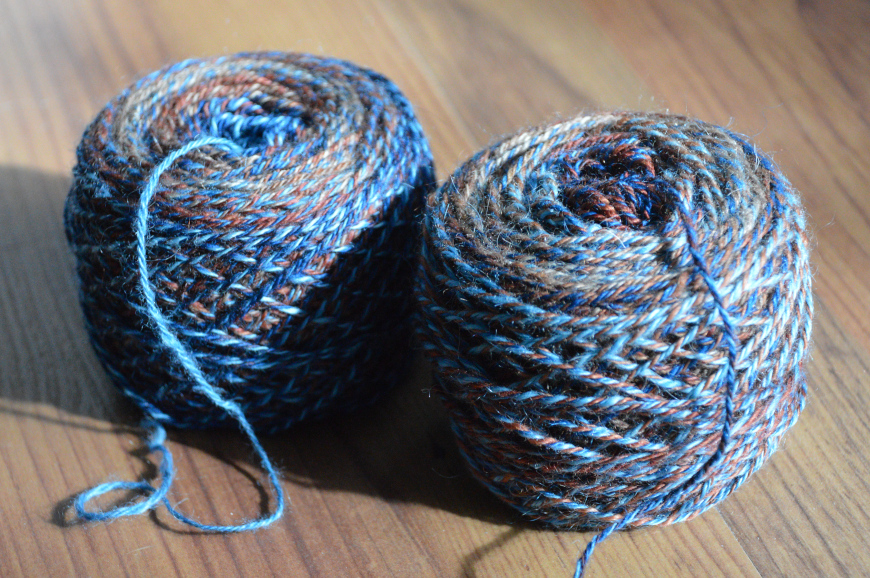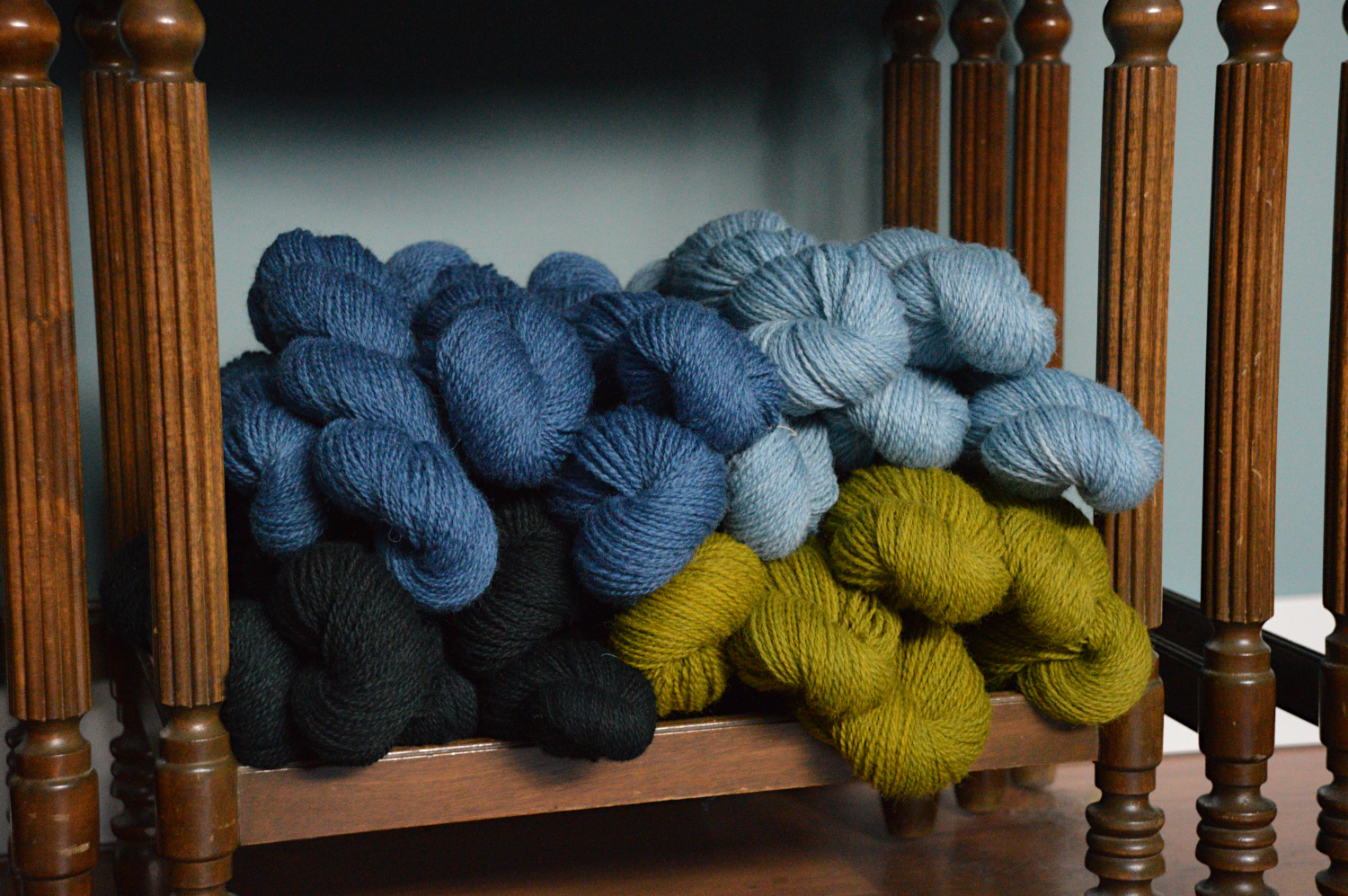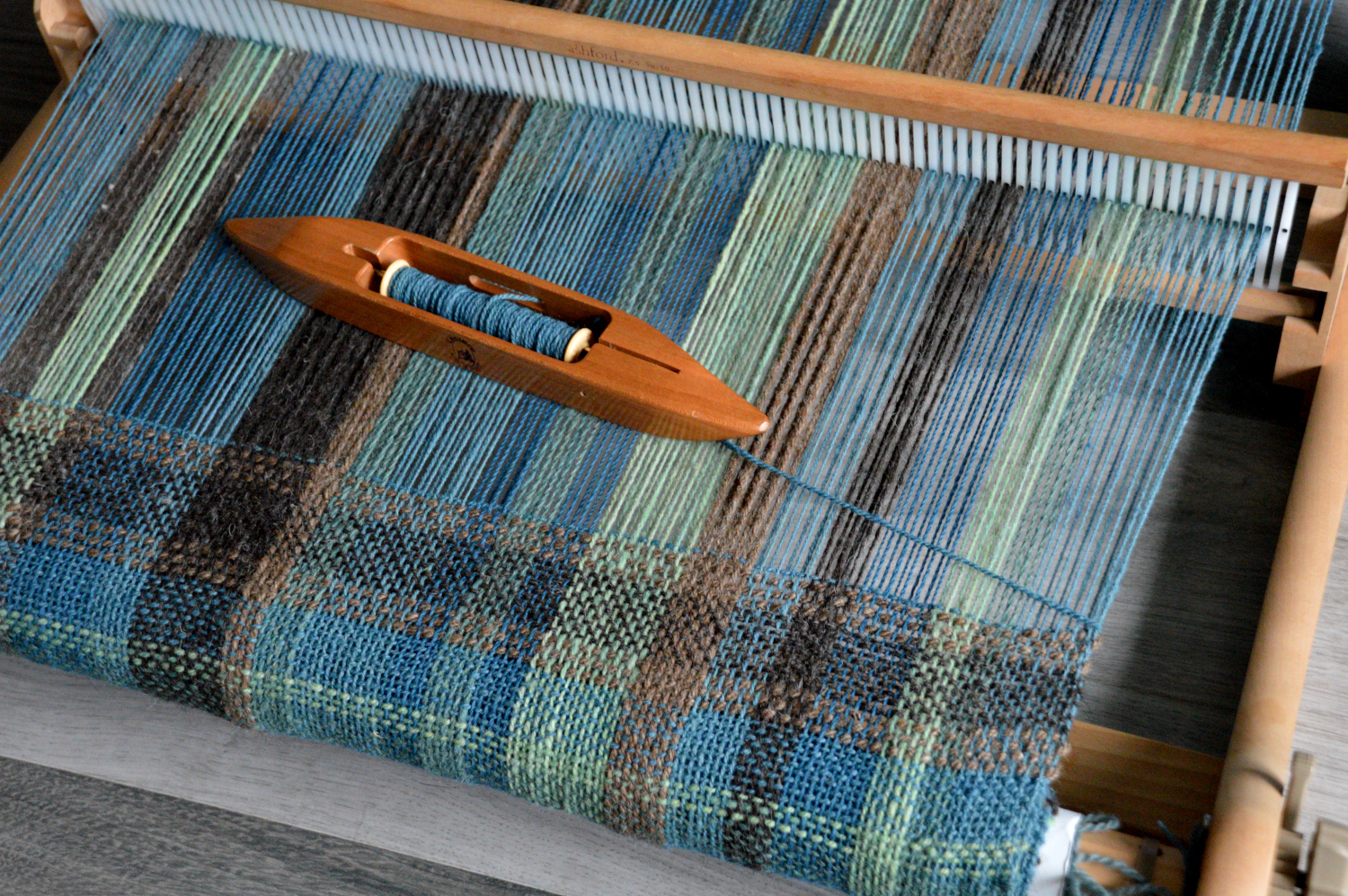May is my absolute most favourite month. May is glorious because it’s when everything really starts to grown and bloom in central Alberta. It’s also when I really start gardening. Moving into a new home means come spring there’s lots that I need to do. Back in March I had to do a bunch of junk removal (old owners left lots of wood around – about a quarter of a truck worth), and May was all about getting garden beds ready. I actually did inherit one garden already built, although the previous owners obviously had left it unused (except for letting their dogs use it as a toilet). Because it’s a food bed that meant, yes, removing all the soil and replacing it. All tolled, I moved 4 cubic yards of soil by hand throughout May.
I also had to build a new bed (and haul more soil!), plus I built another smaller bed with the left over wood from the other bed. Wood is crazy expensive right now, and I was not going to let that beautiful left over cedar go to waste.
Having said that, in between soil-hauling I’ve made some time. Spinning, knitting, dyeing and quilting all made appearances this month. Honestly I’m not sure how.
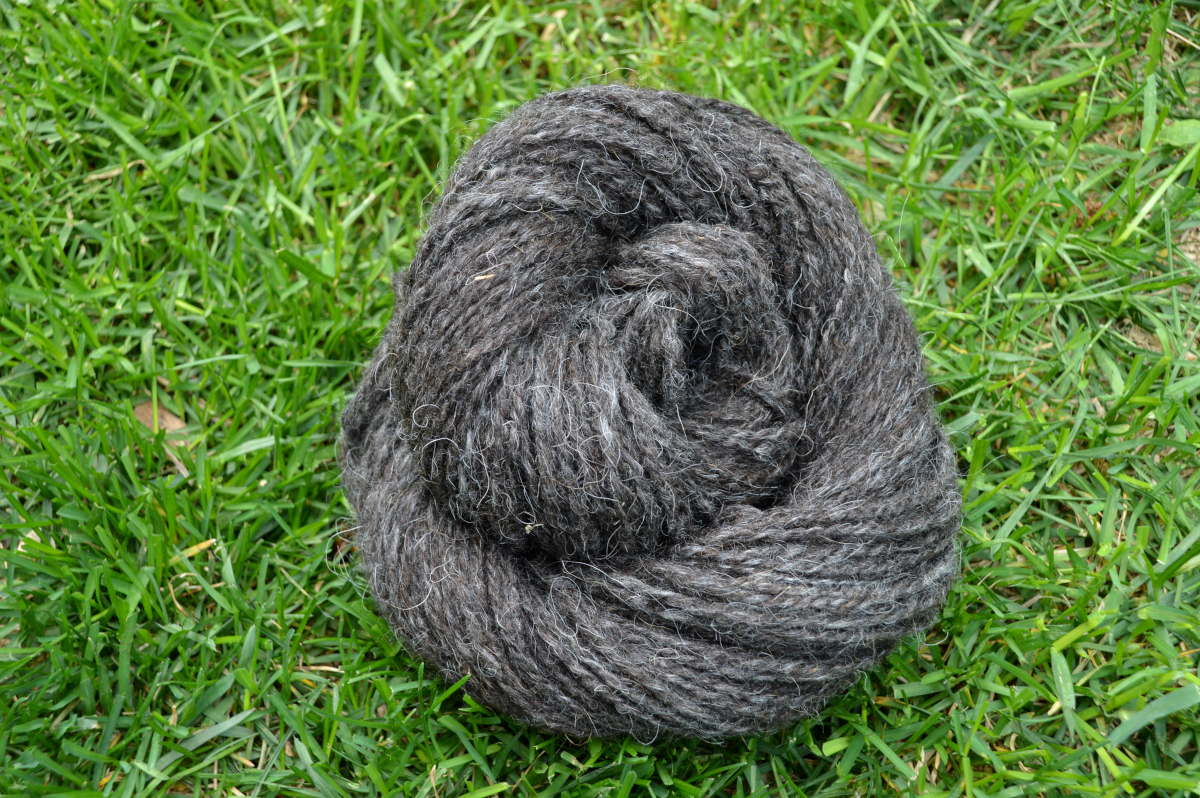
Spinning
Long Way Homestead has an amazing fibre (and yarn!) breed of the month club that I joined in January. Anna uses 100% Canadian wools that she sources, and then mills them herself on her farm. I’m not generally a fibre subscription person, but I am an absolute sucker for Canadian grown and milled wools, so if there was ever a fibre club I was going to join, this was it.
You guys know I don’t like to keep a bunch of stash around, not getting used, so I decided to play a bit of catch up. I haven’t been spinning a ton the past few months. Between natural dyeing and now getting the garden ready, I’ve been pretty busy. But, after talking with my friend Eve I got a bug up my butt to start working on these, and within 2 days I had spun and plied the Icelandic (the first month I received).
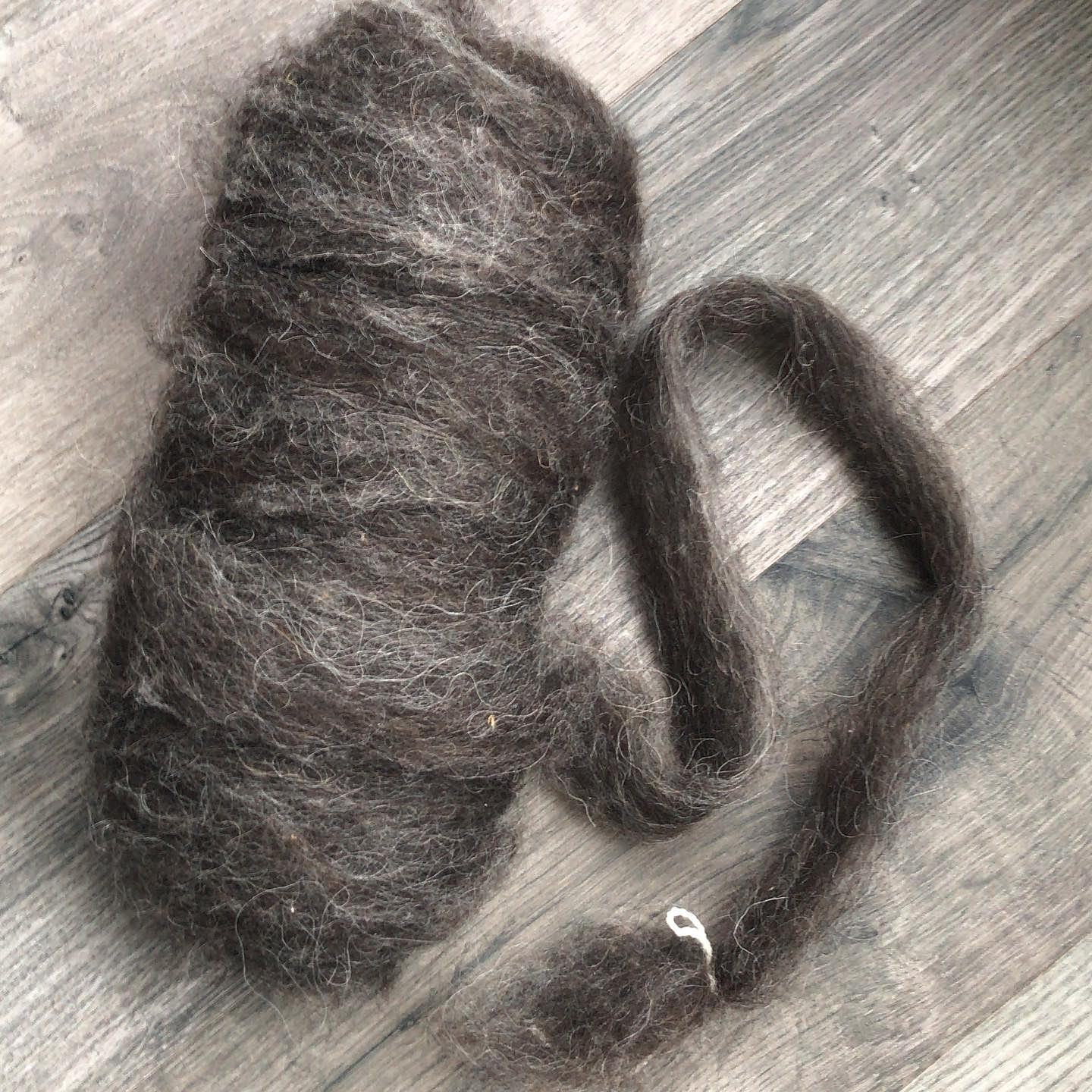
With the Icelandic I decided to try my great white whale: long draw.
I am not skilled at long draw. I do have a Scotch tension wheel which isn’t ideal for true long draw, but even so, creating an even long draw yarn always feela slightly out of reach for me, so I have a habit of avoiding it. But I decided to just go for it with the Icelandic, and if I get a bumpy yarn, oh well (it’ll be good for weaving!).
I love the idea and action of long draw, it’s fast and meditative, and I notice I spend less time obsessing about how the fibre is drafting when I do it. Especially for a fibre like a carded Icelandic prep, it really is an ideal way to spin. I want to be good at it, and come hell or high water, I will get comfortable with it.
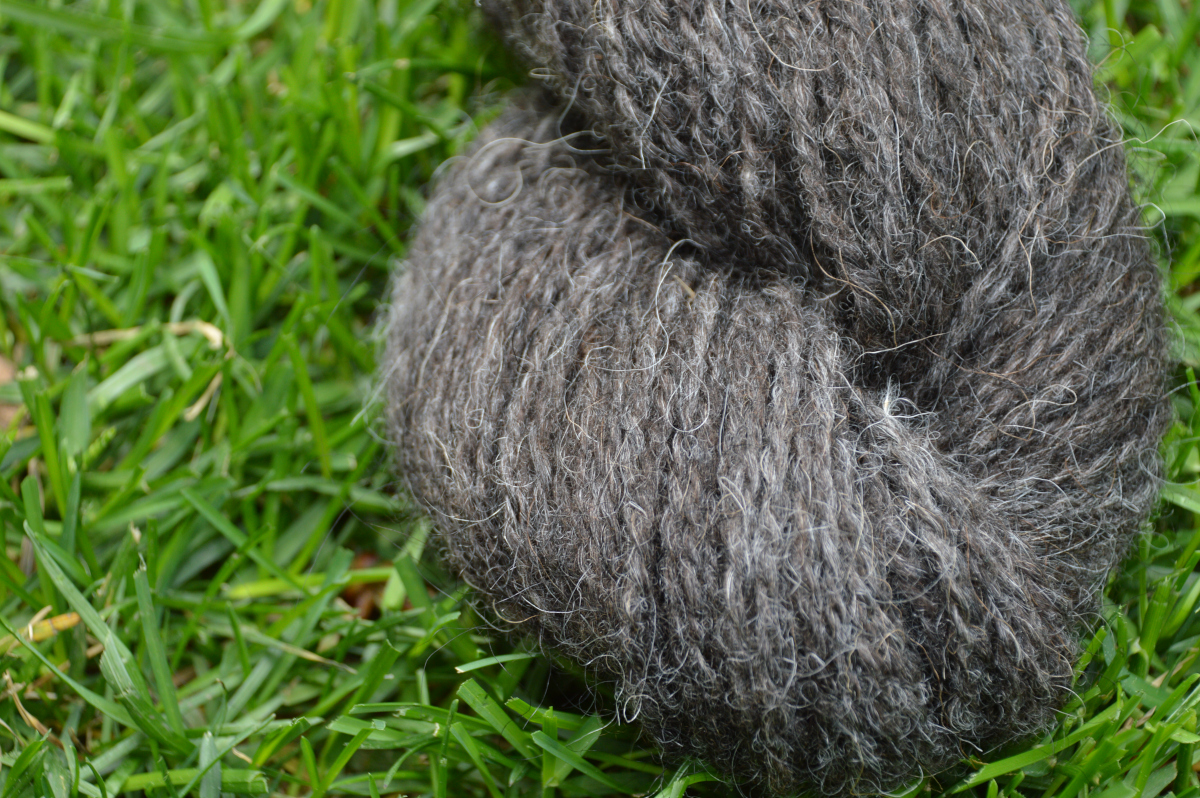
I had some weak spots in this yarn where I was trying to spin low-twist but ended up with not quite enough twist, so I fulled the yarn to give it some strength. Then I gave it a good thwack and hung it up to dry. Hopefully that should give it enough structural integrity to stand up to some weaving later down the line.
I will say this yarn is beautifully soft and fuzzy, it’s a yarn with character and I love that.
Finished Yarn Weight: Bulky to fingering (seriously)
Finished Yarn TPI: 2.5
Finished Yardage: 156 yds
Finished Grist: 714 ypp
Unfinished Yarn Weight: Aran to fingering
Unfinished singles: 8-16 WPI
Unfinished singles TPI: 3
Spun: Unsupported (mostly) long draw
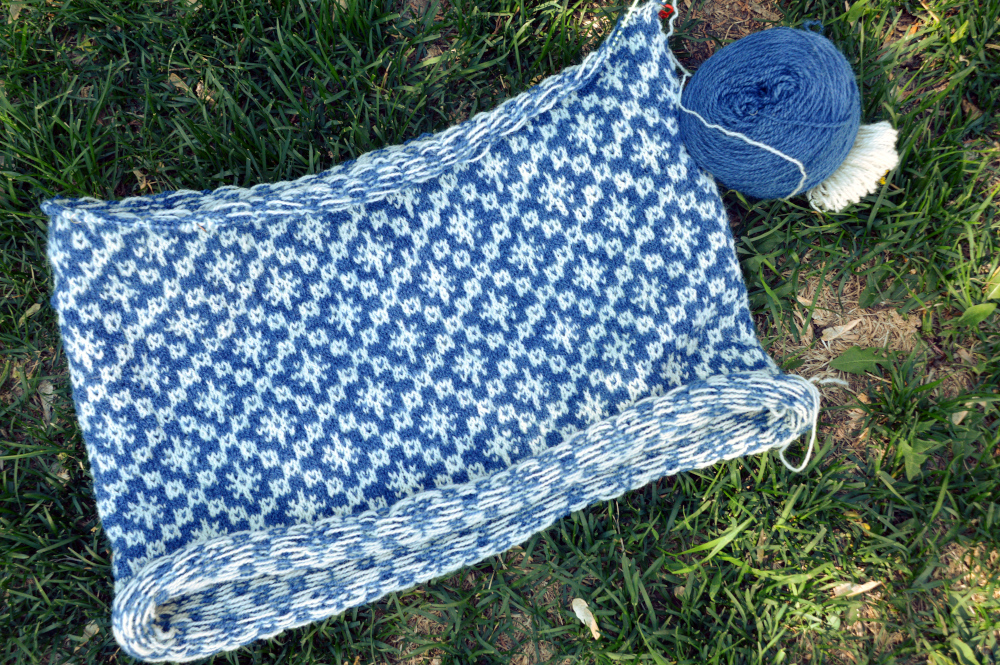
Knitting
Okay, so this isn’t strictly hand spun knitting, which is what I try to keep the blog to. However, it is knitting with the Cheviot Sport I had spun up at Rosebud River Fibre Mill (some of which are still for sale here), and while not spun by me, it feels like it’s just one step removed from hand spun.
My friend Anna and I decided that we both needed a bit of a kick in the pants to finally knit The Oa by Kate Davies, so we’re having a mini knit-along together. I have wanted to knit this sweater ever since it came out. When I got the Cheviot back from the mill I knew this was the perfect yarn for an outdoor garment I want to stand up to the test of time.
I really liked Kate Davies’ colour scheme, so I dyed 6 skeins blue, left six white, then dyed a tiny partial skein using madder and cutch to achieve a rusty orangey red for the trim colours.
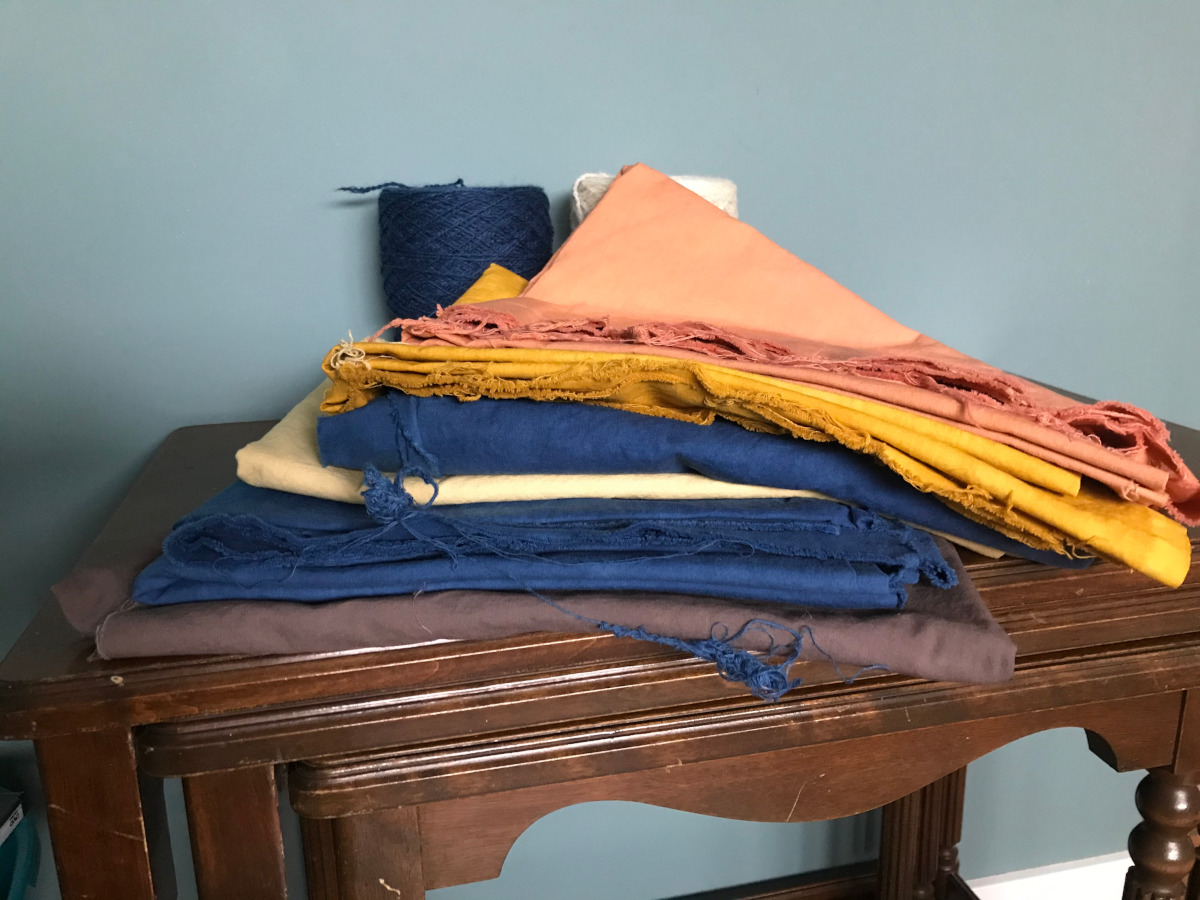
Natural Dyeing
With all my natural dyeing done for the Cheviot Sport, I moved onto dyeing my cotton yardage I’ve been storing for some quilting projects. It felt really good to finally get to these, since I did the tannin/mordant step months ago and they’ve been patiently waiting their turn in the dye pots.
I knew more or less the colours I wanted for the quilt (red, blue, yellow), so I dyed up a bunch of yardage of indigo, then did madder and marigold. I played a bit with the madder pot, using the exhaust to dye another length of fabric, then added iron to achieve this purpley/red garnet-esque type colour. The grey tones came from the tannin, and the reddish-purple came through from the madder. I have absolutely no plans for this yard of fabric, but I’m looking forward to making something with it in the future.
The deeper marigold that I dyed will be for the quilt (or part of it, I don’t need a whole yard), and not wanting to waste any marigold I used the exhaust on another yard of fabric to achieve a very light, delicate yellow. I’m undecided as of yet if I will leave it as is, or dip it in indigo to get a beautiful green. Since I’m always partial to greens, that’s likely what I’ll end up doing.
The madder is colour I’m the least happy with. Despite my using 100% WOF, I got quite a pale shade, closer to what I would expect from around 30% WOF. I plan on doing some testing this summer with madder – changing up the tannin and mordant I use to see how I can get that really, beautiful deep red shade that I can get no problem on protein fibres.
Having said that, the madder, indigo, and marigold are all currently in use on my first big quilting project, and I’ll have more photos to share next month with how that’s sewing up.

